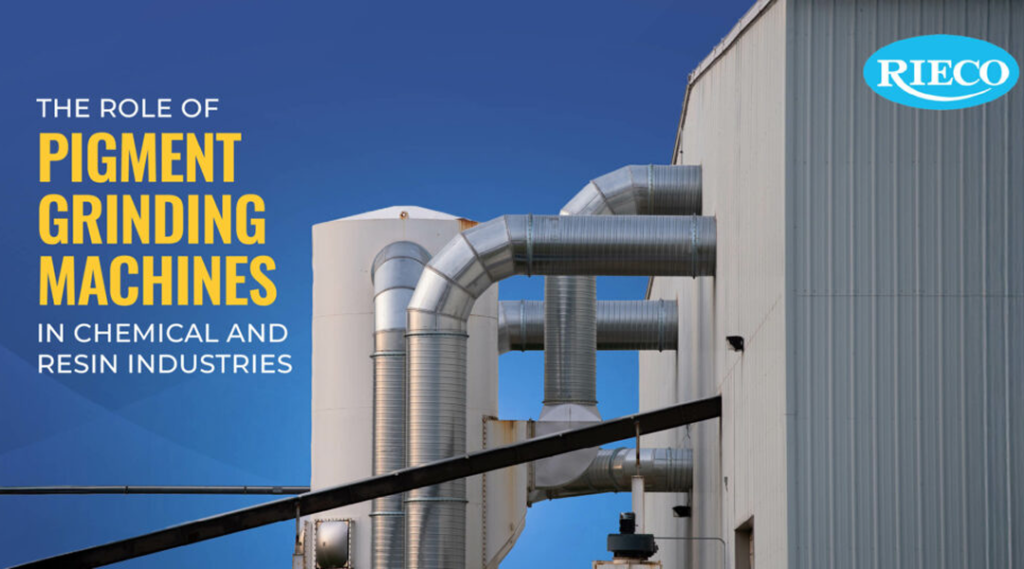The Role of Pigment Grinding Machines in Chemical and Resin Industries

Grinding Solution
A pigment grinding machine is the workhorse behind the colour, opacity, and finish you expect from coatings, inks, sealants, and resin-based systems. In chemical and resin industries, the right machine and process turn dry pigment agglomerates into stable, fine dispersions that deliver consistent shade, gloss, and performance.
Importance of Pigments in Chemical & Resin Industries
Pigments are more than colourants — they directly affect product performance:
- Colour strength & opacity: Ensure coatings and inks achieve full hiding power at lower pigment loadings.
- Gloss & finish quality: Particle size distribution affects surface smoothness and film appearance.
- Durability & resistance: Well-dispersed pigments improve UV stability, corrosion resistance, and chemical resistance.
- Process efficiency: Stable dispersions reduce rework, cut material waste, and shorten production cycles.
In resin systems, dispersion quality determines whether the end product meets quality standards for industrial coatings, adhesives, or speciality chemicals.
What is a Pigment Grinding Machine?
A pigment grinding machine is the key equipment for turning dry pigments into a smooth, evenly dispersed mixture. It transforms agglomerated pigment powders into fine, stable dispersions with uniform texture and colour output before industrial use.
Purpose
- Deagglomerate pigment particles efficiently.
- Achieve target fineness and narrow particle size distribution (PSD).
- Maintain colour strength and film uniformity.
- Ensure stability and consistency across production batches.
Common Types
- Hammer Mills: Ideal for coarse to medium grinding of pigments and fillers.
- Air Classifier Mills (ACM): Provide fine to ultra-fine grinding with integrated classification for uniform particle size.
- Universal Mills: Versatile systems for a wide range of pigments with adjustable fineness.
- Jet Mills: Suitable for ultra-fine grinding where contamination must be minimised.
Modern dry grinding machines offer precision control, minimal heat generation, and consistent PSD — essential for heat-sensitive and performance-critical pigments.
How Does a Pigment Grinding Machine Work?
Most pigment grinding systems in dry processing follow these stages:
- Feeding: Pigments are fed into the grinding chamber via rotary valves or screw feeders to ensure consistent flow.
- Grinding: High-speed impact, shear, and attrition reduce the pigment particle size.
- Classification: Integrated air classifiers separate fine particles from coarser ones, ensuring uniformity.
- Collection: The final product is collected through cyclones or bag filters, maintaining a clean, dust-free operation.
Measuring Fineness
- Hegman / grind gauge: Fast shop-floor check for coarse particles; standard method ASTM D1210.
- Laser diffraction: Detailed PSD for QA/formulation decisions.
Key Factors in Effective Pigment Grinding
To achieve consistent, high-quality dispersions, plants must manage several variables:
- Target fineness & stability: Sub-micron particles improve colour strength and gloss.
- Viscosity & solids: Grinding efficiency depends on the slurry’s rheology.
- Media size and density: Smaller beads suit fine dispersions; denser beads grind harder pigments.
- Heat management: Cooling systems prevent resin or pigment degradation.
- Cleanability: Easy-to-clean designs matter for plants with frequent colour changes.
- QA checkpoints: Routine checks (Hegman, PSD, viscosity) prevent drift in colour or texture.
Applications in Chemical and Resin Industries
Pigment grinding machines are widely applied in:
- Coatings and paints: Automotive, architectural, industrial, and protective coatings rely on stable dispersions for finish and durability.
- Inks: Consistent colour and gloss across high-speed printing runs.
- Adhesives and sealants: Pigments improve performance as much as appearance.
- Speciality resins: Electrical insulation, composites, and engineered resins need controlled pigmentation for both function and look.
Conclusion
In modern chemical and resin manufacturing, dry pigment grinding machines are vital for producing stable, high-performance pigments. By combining precise particle size control, energy-efficient design, and integrated dust management, these systems deliver reliable results across industries. Selecting the right grinding technology ensures consistency, optimises throughput, and supports sustainable, clean manufacturing, key priorities for forward-looking plants like those engineered by Rieco.




